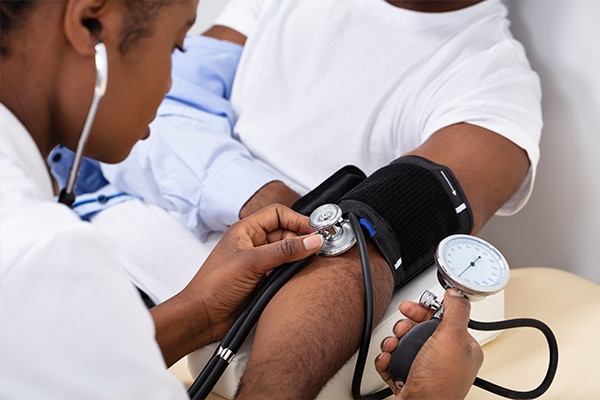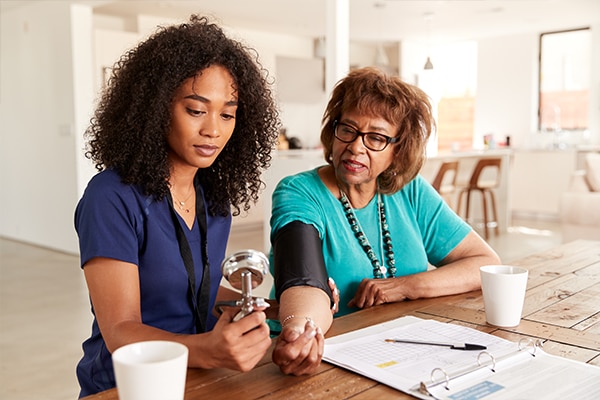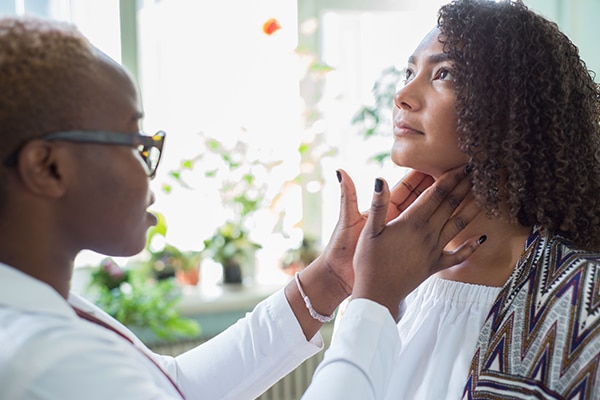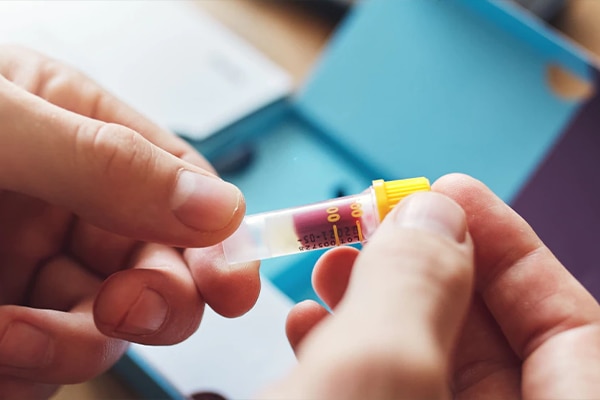20% off €35
Your most Googled questions on general health

We all know to visit a doctor when it feels like something’s wrong. But what about when we feel like we’re just ticking along?
An ache here or a yawn there might not make you panic, but it could leave you with doubts about your general health. So, what should you look out for and what can you do to keep an eye on things?
What can we do to monitor our general health?
What can we do to monitor our general health?
Some people are invited for routine health checks by their doctor. According to the NHS, all adults between 40 and 74 years old with no pre-existing conditions will be invited for a free health check every five years.1
But if you’re not invited to a regular check – or you just want to keep an eye out in the meantime – here are some ways you can monitor your health at home or near you:


Have your blood tested
Blood tests are one of the most common ways of monitoring your health. They have a wide range of uses, including: 2
- checking if you have an infection
- seeing how well certain organs are working
- screening for certain genetic conditions
If you’re taking a blood test for any of these reasons, it’s likely you’ll see a GP. However, you can also take a blood test at home to assess your general health.
They look for certain biomarkers (signs) that can indicate:
- your general health
- your risk of certain vitamin deficiencies
- your cholesterol levels
- your testosterone levels
- your thyroid health
Check your blood pressure
Checking your blood pressure can help you identify your risk of chronic health conditions earlier. Doing it at home can help you keep an eye on things, so you can visit your GP if you have any concerns.
Your range will differ depending on your age and sex, but the NHS advises the ideal blood pressure is between 90/60mmHg and 120/80mmHg.3


Weigh yourself
Your weight doesn’t necessarily indicate your health. However, being seriously under- or overweight may increase your risk of certain conditions.
You might use this measurement to calculate your body mass index (BMI), which is designed to tell you which weight category you fall into.
Remember that BMI only measures your height and weight against each other. It doesn’t take factors like your fitness, muscle mass, and ethnic background into account: these can all affect what measurements are healthy for you.
What might we look out for in an at-home blood test?
Vitamin deficiencies
Vitamin deficiencies can happen when you don’t get enough of a certain vitamin in your diet. They might also occur because of a health condition you have; maybe your body can’t use the vitamin properly.
Other times, vitamin deficiencies might indicate a wider health concern.
Vitamin B12 deficiency
Our bodies can’t make vitamin B12, so we need to get it through our diet. It plays a key role in our nervous system and helps us make red blood cells and DNA.4
It’s common for people who are low in vitamin B12 to develop anaemia. 5
Symptoms of vitamin B12 deficiency can include: 6,7
- feeling weak or tired
- dizziness
- heart palpitations
- shortness of breath
- loss of appetite
- memory loss or changes


Most food sources of vitamin B12 come from meat and dairy products, though some cereals are fortified with it.8 You should get your vitamins through your diet wherever you can. However, if this isn’t possible, a vitamin B12 supplement can help you increase your levels.
An at-home test may be useful if you don’t get much B12 in your diet (for example, if you’re vegan and don’t eat B12-fortified foods) or if you’re experiencing signs of vitamin B12 deficiency.
Handpicked content: Vitamin B12: Functions, foods, deficiency, & supplements
Vitamin D deficiency
According to the National Diet and Nutrition Survey, one in six adults have low levels of vitamin D. 9 Since we get it mainly from the sun, it’s no surprise here in the UK!
The NHS recommends we take a vitamin D supplement every day between October and March.10
While it’s relatively common, vitamin D deficiency can affect our teeth, muscles, and bones, so it’s important to look out for it. Low mood, tiredness and weakness, and achy bones and joints can all be signs of vitamin D deficiency.11
You can also check your vitamin D levels using an at-home blood test to monitor your levels and see if your supplements are helping.
Handpicked content: Vitamin D deficiency: How to identify & treat


Folate (vitamin B9) deficiency
We need folate, or vitamin B9, to make healthy red blood cells. It also reduces the risk of certain birth defects in unborn babies.12
Being low in folate can cause folate deficiency anaemia. Just like with B12 anaemia, you might experience: 13
- weakness or tiredness
- dizziness
- heart palpitations
- shortness of breath
- loss of appetite
- memory loss or changes
Most of your dietary folate comes from fortified foods like cereals and bread. There are also small amounts in foods like oranges, green vegetables, nuts, and peas.14 Taking a multivitamin containing folate may be helpful if you struggle to get it in your diet.
Folate is particularly important for our brains and new cell development, so much so that the NHS recommends taking folate supplements before you start trying for a baby or if there’s any chance you could get pregnant.15
Taking a quick, at-home blood test could help you monitor your folate levels and identify any deficiencies, lowering your risk of complications.
It could also provide some clues if you’ve been feeling low or run down.
Handpicked content: Folic acid deficiency: Causes, symptoms, treatment, & more
Other areas to monitor
Vitamins aren’t the only things that can contribute to our overall health:
Thyroid issues
The thyroid is a small, butterfly-shaped gland in our neck. Its job is to produce hormones that help with our metabolism.16 Sometimes it produces too many or too little of these hormones. We call this having an overactive or an underactive thyroid.17,18
An overactive thyroid can cause anxiety, mood swings, persistent tiredness and weakness, heart palpitations, and weight loss. If left untreated, it may cause eye problems and pregnancy complications.19
An underactive thyroid can cause tiredness, weight gain, and feeling depressed. If not treated, it may lead to heart disease and problems during pregnancy.20 Sometimes, underactive thyroid symptoms can feel like menopause – so it might be worth taking a test to help determine why you’re feeling like this.


Testosterone levels
We all have some amount of testosterone in our bodies. It can be made by the testes and the ovaries.
In men, a testosterone imbalance can cause low sex drive, low energy, and erectile dysfunction.21 In women, conditions like polycystic ovary syndrome (PCOS) may result in a testosterone imbalance.22
You might want to check your testosterone with an at-home test if you’re experiencing any of these, or if you’re taking testosterone replacement therapy.
Cholesterol levels
We need some cholesterol to help keep our cells healthy, but a high amount can contribute to our risk of heart attacks and stroke.23
There are certain factors that include our risk of developing high cholesterol (like eating too much saturated fat, smoking, physical inactivity, and genetics), but anyone can have it. 24
High cholesterol doesn’t have any symptoms, so you need to be tested to see if you have it. Taking a test can help you understand your risk of conditions like heart disease and take measures to help lower your risk. They can also be useful if you want to monitor your cholesterol levels over time.


Anything else?
It’s always best to see your GP if you’re worried about your health. But sometimes we just like to know how our body’s doing or keep track of the conditions that we’re already receiving medical help for.
Using at-home testing as a yearly check-in can help give you peace of mind about your everyday health and make sure you’re in the best shape you can be.
These are useful places to start when it comes to your general health. However, it’s worth remembering that it won’t pick up on other deficiencies, imbalances, or risk factors.
If you’re concerned about your health, or you still feel like something’s not right after a test, you should always visit your doctor for advice.
At-home testing: Answering your FAQs
1. What is at-home blood testing?
It’s as simple as it sounds: it’s a blood test that you can do yourself from home.
Most at-home tests use a simple finger prick to draw blood. They come in a kit that provides all the equipment and information you’ll need.
These tests measure for particular signs, which can tell you if you have ideal levels of certain vitamins, hormones, or other measures of health. Some tests may also tell you if you’re at risk for certain health conditions.
They can’t diagnose you with a medical condition, but they can provide accurate results and advise you to get further help if needed.
2. Where can I get an at-home blood test?
You can find a range of at-home blood testing kits in your local pharmacies, as well as on the high street and online.
3. Why should I do an at-home test?
There are plenty of reasons! Maybe you’re not eligible for a routine health check-up and you just want to make sure you’re in the best shape you can be.
Perhaps you find it difficult to get to your GP surgery, or you’d just be more comfortable at home.
You might already be receiving medical treatment for one of these conditions. In this case, taking an at-home test is a useful way of monitoring your levels in between appointments.
If you’re fit and healthy, treat it as a yearly “MOT” to check up on your body and ensure you’re staying well.


4. Are at-home tests medical devices?
Yes. While they’re not a replacement for all medical advice, they’re a useful and accurate way to check up on your general health when you’re not due an appointment.
At-home tests can’t diagnose you with a condition, but they can let you know whether you fall within the ideal range for certain biomarkers.
The final say
Could these tips give you some confidence about your overall health?
You should always see a doctor if you’re feeling unsure, but simple self-checks can provide peace of mind in between appointments.
Plus, our expert colleagues are here to provide free, personalised advice in-store or online to help you find out which test could be right for you.
What could you learn about your body?
The advice in this article is for information only and should not replace medical care. Please check with your GP or healthcare professional before trying any supplements, treatments or remedies. Food supplements must not be used as a substitute for a varied and balanced diet and a healthy lifestyle.
Before taking any supplements or minerals, it’s best to make sure you’re getting all the nutrients through your diet first.
Food supplements must not be used as a substitute for a varied and balanced diet and a healthy lifestyle.
- https://www.nhs.uk/conditions/nhs-health-check/what-is-an-nhs-health-check/
- https://www.nhs.uk/conditions/blood-tests/
- https://www.england.nhs.uk/ourwork/clinical-policy/cvd/home-blood-pressure-monitoring/
- https://www.nhs.uk/common-health-questions/lifestyle/what-is-blood-pressure/
- https://www.nhs.uk/live-well/healthy-weight/bmi-calculator/
- https://www.whittington.nhs.uk/document.ashx?id=15118
- https://www.whittington.nhs.uk/document.ashx?id=15118
- https://www.nhs.uk/conditions/vitamin-b12-or-folate-deficiency-anaemia/symptoms/
- https://www.whittington.nhs.uk/document.ashx?id=15118
- https://www.nhs.uk/conditions/vitamins-and-minerals/vitamin-b/
- https://www.nhs.uk/conditions/vitamins-and-minerals/vitamin-d/
- https://my.clevelandclinic.org/health/diseases/15050-vitamin-d-vitamin-d-deficiency
- https://www.nhs.uk/conditions/vitamins-and-minerals/vitamin-b/
- https://www.whittington.nhs.uk/document.ashx?id=1955
- https://www.whittington.nhs.uk/document.ashx?id=1955
- https://www.nhs.uk/conditions/vitamins-and-minerals/vitamin-b/
- https://www.nhs.uk/conditions/overactive-thyroid-hyperthyroidism/
- https://www.nhs.uk/conditions/overactive-thyroid-hyperthyroidism/
- https://www.nhs.uk/conditions/underactive-thyroid-hypothyroidism/
- https://www.nhs.uk/conditions/overactive-thyroid-hyperthyroidism/
- https://www.nhs.uk/conditions/underactive-thyroid-hypothyroidism/
- https://my.clevelandclinic.org/health/diseases/15603-low-testosterone-male-hypogonadism
- https://www.nhs.uk/conditions/polycystic-ovary-syndrome-pcos/causes/
- https://www.bhf.org.uk/informationsupport/risk-factors/high-cholesterol/



